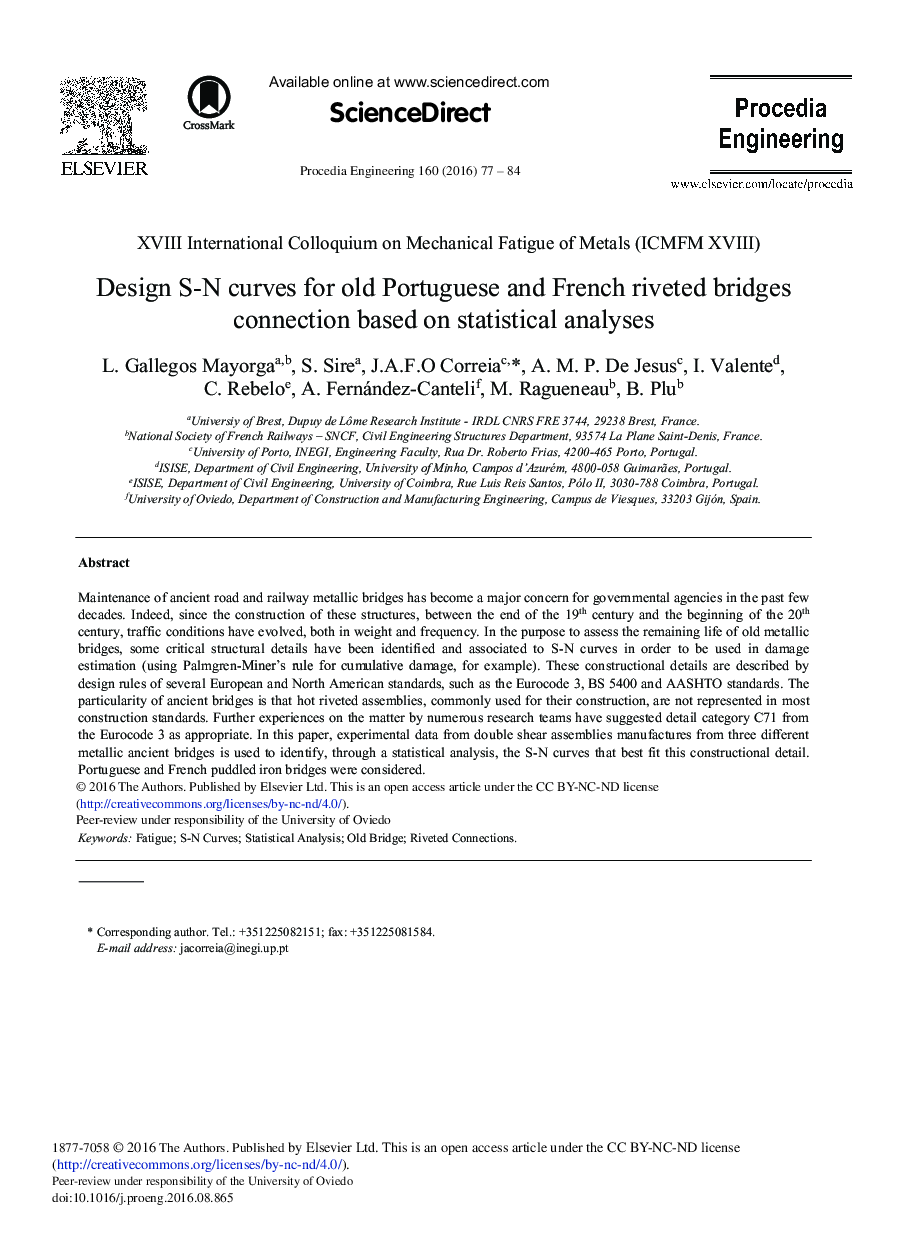| Article ID | Journal | Published Year | Pages | File Type |
|---|---|---|---|---|
| 5029415 | Procedia Engineering | 2016 | 8 Pages |
Maintenance of ancient road and railway metallic bridges has become a major concern for governmental agencies in the past few decades. Indeed, since the construction of these structures, between the end of the 19th century and the beginning of the 20th century, traffic conditions have evolved, both in weight and frequency. In the purpose to assess the remaining life of old metallic bridges, some critical structural details have been identified and associated to S-N curves in order to be used in damage estimation (using Palmgren-Miner's rule for cumulative damage, for example). These constructional details are described by design rules of several European and North American standards, such as the Eurocode 3, BS 5400 and AASHTO standards. The particularity of ancient bridges is that hot riveted assemblies, commonly used for their construction, are not represented in most construction standards. Further experiences on the matter by numerous research teams have suggested detail category C71 from the Eurocode 3 as appropriate. In this paper, experimental data from double shear assemblies manufactures from three different metallic ancient bridges is used to identify, through a statistical analysis, the S-N curves that best fit this constructional detail. Portuguese and French puddled iron bridges were considered.
